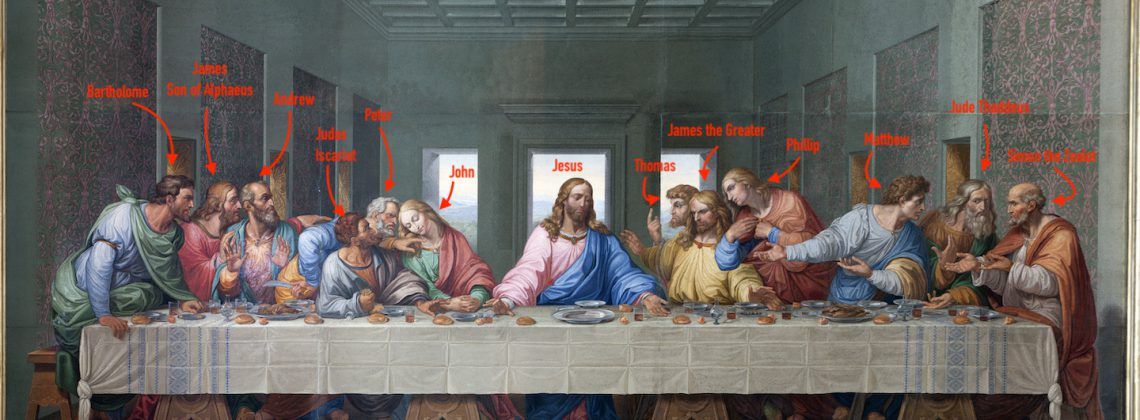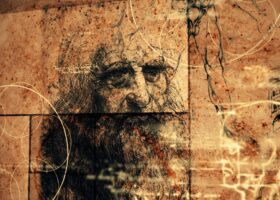The Last Supper is one of the most iconic paintings in art history. However, there are many rumors and modern controversies spoken about it which adds to how interesting it is! Here are some amazing facts to help you understand the Last Supper, written by a Ph.D. historian.
Pro Tip: Reading up on an attraction will make an in-person guided tour more memorable and interesting and memorable! Check out our guided tours of Milan and the Last Supper! Tickets to this painting sell out months in advance, so don’t miss your chance!
9 Secrets You Should Know About the Last Supper
Da Vinci created many paintings and fascinating inventions in his lifetime that were super influential for generations of artists to come. The Last Supper, (Il Cenacolo or L’Ultima Cena) is one of these pieces. Traditionally, it became representative of da Vinci’s chiaroscuro technique and his use of perspective, but its importance and story unveil many more layers that we are about to discover.
Not ready to book a tour? Find out if a tour of the Last Supper is worth it.
9. The Last Supper Is Not a Fresco!
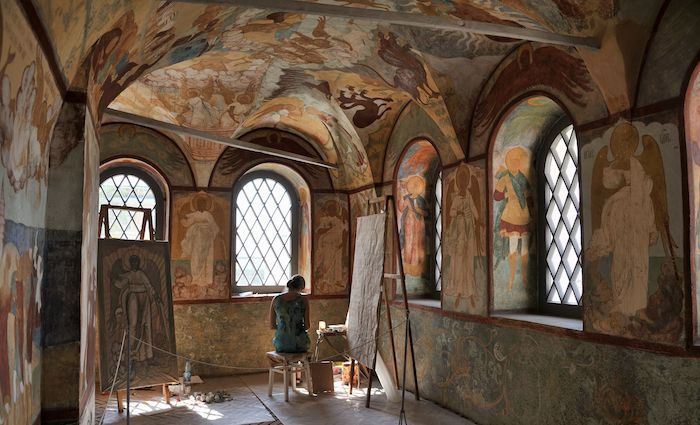
A lot of people think this mural is a fresco, but it is not. It is better to refer to it as a mural. It is large, measuring 15 feet by 28 feet (460 by 880 centimeters), and covers an end wall of the refectory of Santa Maria delle Grazie (Milan). The technique used is rich tempera—similar to colored chalk.
Historian Lomazzo hints later in the Rennaissance, during his analysis of the works of Leonardo, that the original technique used dry pigments. And Pietro Marani points out that, in Leonardo’s notebooks, there are comments referring to this technique. He specifically refers to a note where Leonardo writes to ask Gian di Paris for the method of coloring with dry pigment.
8. The Theme of The Last Supper
The night of Christ’s last supper is a common depiction during the middle ages and the Renaissance. However, the artists of the time only had the Gospels as a point of reference for these pieces. Besides, these descriptions are not consistent amongst themselves. In fact, they depict the event and scenery rather disparately.
Many other depictions of the last supper have a very spartan and austere look. By the time Leonardo started working on the commission, he would have seen many of these depictions of the last supper to inform his own idea. According to King, this makes the following aspects of the mural remarkable.
7. Composition
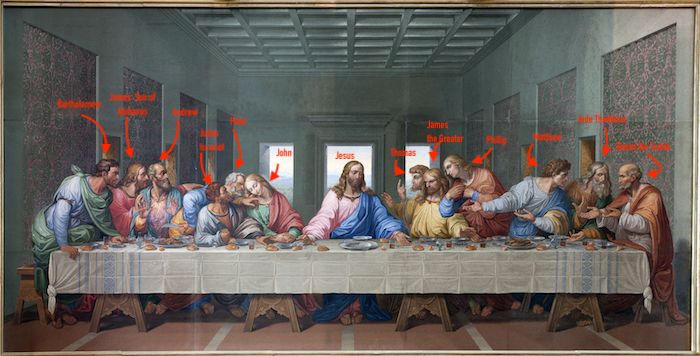
Leonardo made the apostles very expressive in this painting. He portrayed the exact moment when Jesus told them he would be betrayed by one of them. This was rather unusual for this kind of scene, and the shock and horror really stand out. Moreover, Leonardo groups the apostles in a way that breaks down the narrative and emotions in the room. Starting left to right, the order is:
- Bartholomew, James son of Alphaeus, and Andrew showing surprise
- Judas Iscariot, Peter, and John who all have important, individual roles in the life of Christ. Putting favourites such as Peter and John next to Judas creates contrast and breaks away from traditional narratives of the last supper that usually keep Judas isolated or in the shadows.
- Jesus: we can see a representation of the holy trinity and expression of the eucharist as Jesus reaches for bread and wine forming a triangle, according to Sgarbi.
- Thomas, James the Greater, and Philip are stunned and wanting clarification.
- Matthew, Jude Thaddeus, and Simon the Zealot: Matthew and Jude turn to Simon as if asking him for answers.
According to Steinberg, we know the identity of each apostle thanks to an unsigned copy of the painting.
Not ready to book a tour? Check out our Milan Guide for more resources.
6. Vanishing Point & Focus
In art history, the vanishing point is where all the light converges in the painting. It is also known as the focus and tends to be brighter or more noticeable. According to Stephen Skinner, all these lines converge on Jesus in the Last Supper.
But there are 13 lines: One per apostle, plus another for Jesus. Skinner states that this is probably the result of experimenting with perspectographs: Machines that helped artists create leveled scenery through a wire grid view, so the artist didn’t lose the focus.
Though there is no conclusive evidence, Leonardo himself may have experimented with these machines, which could have influenced his composition in Last Supper.
5. Symbolism
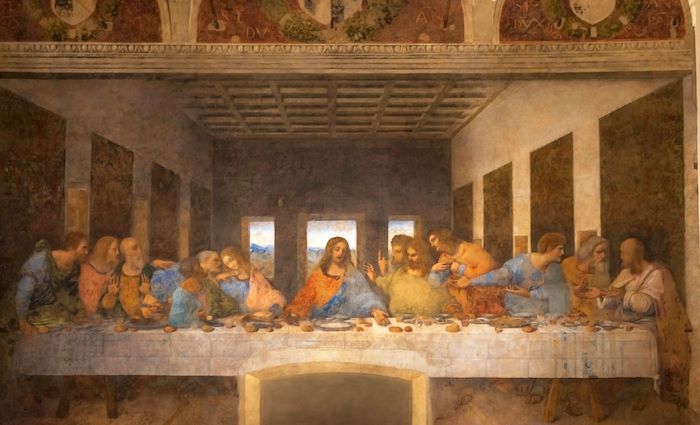
According to Laszlo Zsolnai, this painting is rooted in deep Christian liturgy and Italian customs. Eating together and sharing food is a principle of charity, solidarity, and community within Christian ideology.
But it is also a key Italian family tradition. This is as much a humanistic depiction of Jesus and his family on Earth as it is of the Christian discourse. This adds to the shock and horror experienced and depicted on the apostles’ faces as they hear the news that one of them is about to betray Christ.
4. Barely Original Any More
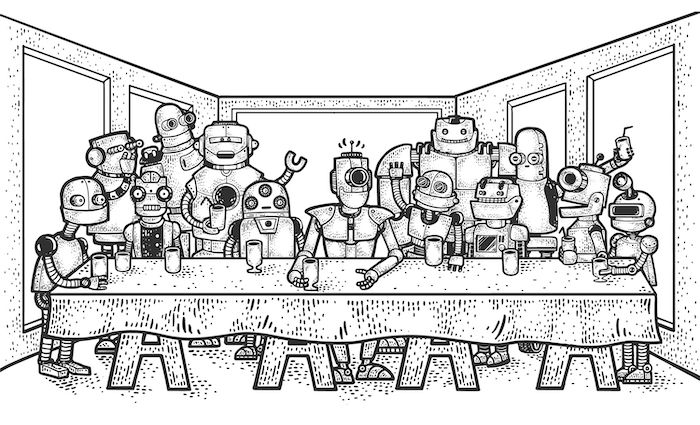
Unfortunately, this mural technique is not as durable as a fresco in certain circumstances, which Leonardo had not predicted. He started the commission around 1494 and finished it by 1498. Originally, the wall where he painted the mural was a thin exterior wall that was more exposed to the elements.
According to Michael Ladwein, there was a catastrophic flood in Milan in 1500 that severely damaged the convent. Italian and foreign artists visited the painting throughout the 16th century noticed and recorded the water damage. Furthermore, the refectory was used as a stable during the Napoleonic period and the damage increased. And the cherry on top of the cake was the bombing damage received during the Second World War.
By the late 20th century, the painting was barely recognizable. The Last Supper was restored through an exceedingly process that lasted from 1977 to 1990. Unfortunately, this means the majority of the painting is mostly altered and very few traces are visible of Leonardo’s original work.
According to Laszlo Zsolnai, this heavy restoration and alteration has been crucial for its preservation. Otherwise, it would be entirely lost. For conservation reasons, there is a strict limit of people who can visit the refectory to see the painting, thus why bookings sell out extraordinarily fast.
3. Plagiarized!
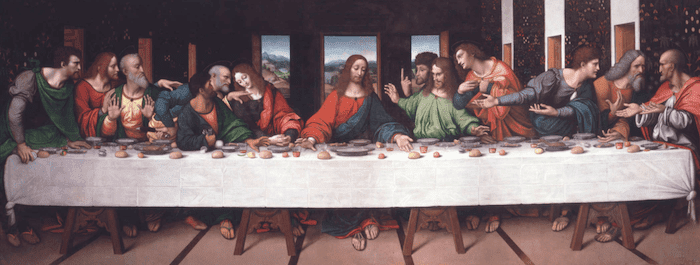
Thankfully for the conservation team and art historians, the Last Supper was dearly plagiarised and copied by many artists since the Rennaisance. One of the most famous and best copies is Giampietrino’s oil on canvas painting.
He actually was one of Leonardo’s students and admirers. Besides, Giampietrino’s work has allowed us to understand this piece better from the viewpoint of originality.
This copy was crucial for our understanding of the original colors in the mural. Although oil colors tend to be sharper, this copy suggests that the Last Supper would have been rather vibrant. You can find Giampetrino’s copy of the Last Supper on display at Magdalen College in Oxford.
2. Political Statement
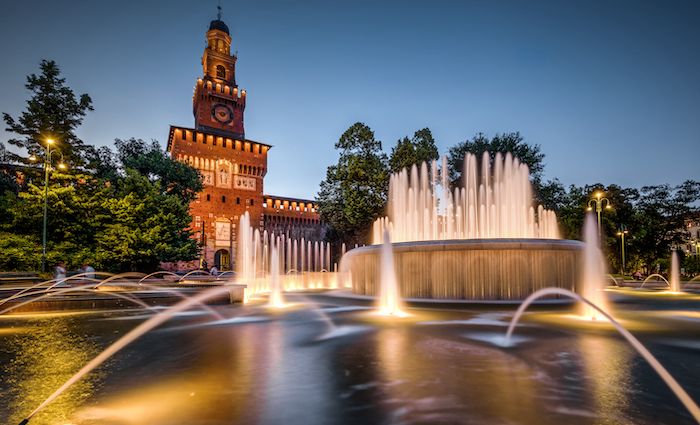
According to Michael Ladwein, the painting states a covert political statement about Leonardo’s commissioner and patron. The Milanese political scene had many court dramas, political intrigues, and betrayals. Ludovico Sforza, who was duke of Milan, commissioned the mural as part of the renovation of the current convent, which he intended to use as his family’s mausoleum.
Sforza and the court of Milan had many internal problems like most Italian cities at the time. Ludovico helped Milan flourish in the arts and science. However, he received a bad reputation due to his military campaigns and apparent ineptitude for warfare. Burckhardt, who is a key scholar of Renaissance historiography, already established Ludovico as a polarising character and the court of Milan as a turbulent place.
1. Conspiracy Theories Explained
Novels like Dan Brown’s Da Vinci Code have created a lot of conspiracy theories over this artwork. According to Olson and Miesel, these narratives are speculations against Christian ideology and symbology. However, the Christian liturgy is a key aspect of Renaissance art. And it was important for both patrons and artists of the period.
Dan Brown proposes two main secrets hidden in this painting: The missing chalice of Christ (the holy grail) and the fact that St. John the apostle was, in fact, Mary Magdalene and that she and Jesus were married.
Olson and Miesel argue that the holy grail only makes sense if we suspect that Leonardo would actively depict Jesus’ chalice differently from the rest. However, Leonardo is a man of the Renaissance and a pious one. The narrative and style of the time would have put forward a Jesus that was humble, realistic, and humane. Regarding John: He was the youngest apostle, so Leonardo depicts him with softer characteristics. This was a common technique of the time that makes John look effeminate.
We can see this in other artworks of the period. For example, Leonardo’s St. John the Baptist also shows a delicacy to his appearance and demeanor. Moreover, according to Ross King, in Christian mythology and liturgy, John was the beloved disciple of Christ.
Many religious pieces represent a closeness between Christ and this apostle, which is best seen in depictions of the Sacred Heart. Often in these depictions, John is to the left of Jesus and leaning onto him. However, by pushing John over to Peter, Jesus becomes a stand-alone figure.
Not ready to book a tour? Find out if a tour of the Last Supper is worth it.
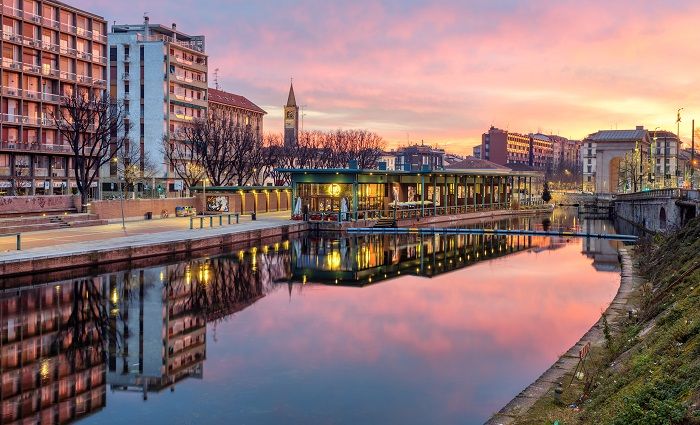
Where To Stay in Milan
Milan is a small city with plenty to explore from iconic landmarks to a vibrant art and design scene and old-world charm. Plan where to stay in the best neighborhoods in this beautiful city.
